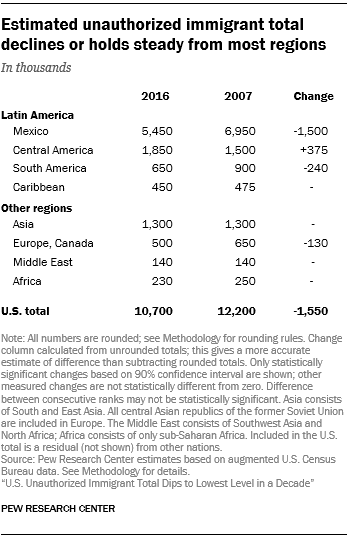'We've Moved Off the Five.' Trump Already Caving on Border Wall Demands. Good for Him.
The president's commitment to increased physical barriers on the Southern border is dumb and he is smart to back down.

President Trump is nothing if not supremely confident in all his utterances, whether they are scripted or improvised, whether they are consistent with or contradict past statements. He's vast, contains multitudes, and very well, he contradicts himself! Walt Whitman is his spirit animal! This is frustrating to his critics (and, presumably, his supporters) because conversations proceed in wildly different directions without any acknowledgment that a change of direction has in fact occurred.
Which is exactly what's happening with his insistence that he will keep the government shut down if he doesn't get $5.7 billion to fund a wall along the border between Mexico and the United States. Now, according to his own acting chief of staff, the president is ready to accept less money under the rubric of generalized "border security." "We moved off of the five and we hope [Democrats] move up from their 1.3," says Mick Mulvaney, according to The Associated Press. The Democrats, who take control of the House of Representatives this week, have said they will give $1.3 billion but no more in added funding for general "border security."
Good for President Trump for setting up a prelude to caving. A physical barrier across the Southern border, which would cost $28 billion to build and another $48 billion to maintain and operate during its first decade, is a really bad way to control illegal immigration flows (more on that later). And while government shutdowns help to demonstrate how so many government employees and services are really not "essential," they also end up costing more money than business as usual.
Expect a resolution of the government shutdown more on the Democrats' terms than on Trump's. Just don't expect him to acknowledge he yielded in any way, shape, or form. That would be completely out of character for him, even though the road to the current moment is paved with reversals of his positions. Six months after taking office, Trump told Congress to fix the Deferred Action Against Childhood Arrivals (DACA) program, an executive order by Barack Obama that protected so-called dreamers, immigrants who were brought here illegally as children by their parents, from deportation. Earlier in the year (February), Trump turned down a deal brokered by independent Sen. Angus King of Maine and Republican Mike Rounds of South Dakota that would have provided $25 billion for a wall in exchange for providing a path to citizenship for Dreamers. The bill got 54 votes (46 Democrats and eight Republicans), short of the 60 needed to advance in the Senate, despite Trump's opposition (he called it a "giant amnesty"). Had he supported it, it almost certainly would have become law and construction on his wall might already be underway. A Trump-supported bill in the Senate, which would have funded only the wall, got just 39 votes.
But then just a week or so ago, the president seemed likely to sign a continuing resolution (CR) that would have funded the government through February but did not contain new funding for a border wall. Only after an outpouring of vitriol from conservative media figures such as Rush Limbaugh, Laura Ingraham, and Ann Coulter did Trump reverse course and say he wasn't going to sign a CR that didn't include at least $5.7 billion for a wall.
On December 21, the president told incoming Speaker Nancy Pelosi (D-Calif.) and Senate Minority Leader Chuck Schumer (D-N.Y.) unequivocally:
"If we don't get what we want…I will shut down the government. Absolutely. And I am proud to shut down the government for border security because the people of this country don't want criminals and people who have lots of problems and drugs pouring into our country. I will take the mantle. I will be the one to shut it down. I'm not going to blame you for it."
The president tweeted this image the same day he met with Pelosi and Schumer.
A design of our Steel Slat Barrier which is totally effective while at the same time beautiful! pic.twitter.com/sGltXh0cu9
— Donald J. Trump (@realDonaldTrump) December 21, 2018
By Christmas Eve, Trump was already blaming the Democrats for the shutdown and he was still pushing the need for a physical barrier rather than, well, more sophisticated approaches to surveilling the border.
The most important way to stop gangs, drugs, human trafficking and massive crime is at our Southern Border. We need Border Security, and as EVERYONE knows, you can't have Border Security without a Wall. The Drones & Technology are just bells and whistles. Safety for America!
— Donald J. Trump (@realDonaldTrump) December 24, 2018
And yesterday, the president audaciously blamed the recent deaths of two children in the custody of U.S. Customs and Border Protection (CBP) specifically on "Democrats" rather than anything related to his own administration's policies, which include holding families seeking asylum in detention centers run by CBP and Immigration and Customs Enforcement (ICE). That policy itself is a change from earlier programs that typically allowed families seeking asylum to live in the United States while awaiting the adjudication of their claims. One of those programs, the Family Case Management Program, had a 100 percent compliance rate among participants, suggesting that warehousing asylum-seeking families in detention centers is not just costly but unnecessary.
Any deaths of children or others at the Border are strictly the fault of the Democrats and their pathetic immigration policies that allow people to make the long trek thinking they can enter our country illegally. They can't. If we had a Wall, they wouldn't even try! The two…..
— Donald J. Trump (@realDonaldTrump) December 29, 2018
That is tough talk, for sure (and to the extent that it shifts blame for deaths from ICE and CBP, morally repugnant). But with acting Chief of Staff Mick Mulvaney signaling that the White House is ready to accept crumbs to save face ("We moved off of the five and we hope they move up from their 1.3"), it's worth pausing to at least briefly lay out why a wall—whether made of concrete or beautiful slats or whatever—is an ineffective way to control illegal entry into the country.

The short version? For starters, over the past several years, the vast majority of people who are in the country illegally actually came here legally and then overstayed work, student, or tourist visas. This is a shift from decades past but the number of entries made outside of legal checkpoints declined by 90 percent between 2000 and 2016, the latest year for which there is full data. If you want to control them, it's time to turn to the "bells and whistles" of technology to find people who enter legally and then stay illegally.
In 2016, the Department of Homeland Security (DHS) estimates there were 170,000 entries made outside of regular checkpoints. In the same year, DHS estimates that 628,000 people who had entered the country legally overstayed their visas. If illegal immigration status is the problem, building a wall is not going to affect the overwhelming majority of illegals in any given year. It's also worth noting that the caravans and other asylum seekers that seem to vex Trump so much inevitably present themselves at official checkpoints precisely so they can apply for legal status.
There are other signs that Trump is fighting the last several wars when it comes to illegal immigration. As Pew has documented using government numbers, illegal immigration peaked in 2007 at 12.2 million and has declined to 10.7 million, with every indication that it will continue to drop. While the president launched his campaign by invoking non-stop hordes of Mexicans constantly swarming northward, fully two-thirds of illegals have lived in the country for over a decade and the number of illegal immigrants from Mexico has declined by 1.5 million since 2007, to a current total of about 5.5 million. It's true that illegal migration from Central America is up over the same period by about 375,000 people but it's also true, as Reason's Shikha Dalmia has written, that the main sender countries—Guatemala, Honduras, El Salvador—have been destabilized for decades by U.S. foreign and economic policy. If it is illegal status per se that troubles the president and his supporters, they would do well to start targeting South Asians and East Asians, who account for 1.3 million of undocumented immigrants in the United States.
But if it's a wall or nothing you must have, here's a short video created by Texas Democrat Beto O'Rourke, the former congressman who just lost a Senate race to Republican Ted Cruz. I'm not at all a Beto fan—he seems to be a warmed-over version of a few decent, centrist ideas mixed with the worst instincts toward p.c. and for progressives to promise more and more free stuff to more and more people—but he nails the case against the wall pretty well here.
— Beto O'Rourke (@BetoORourke) December 28, 2018
If you're interested in reducing illegal immigration in a way that won't create (more of) a police state, tank the economy, burden employers, and more, check out this right now.


Show Comments (235)